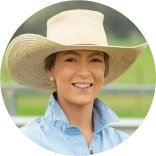Property-to-property livestock transfers: who's responsible?
15 Sep 2021
 SMALL FARMS NETWORK - SPRING 2021 - ANIMAL HEALTH
SMALL FARMS NETWORK - SPRING 2021 - ANIMAL HEALTH
By Eve Hall
District Veterinarian
M: 0439 078 989 | E: eve.hall@lls.nsw.gov.au
Buying and selling livestock is a process that involves a lot of checks and balances that ensure that animals can be traced in the event of a disease outbreak (for example) and to protect our export markets.
When livestock are moved between properties with different Property Identification Codes (PICs) that movement needs to be recorded on the National Livestock Identification System (NLIS) database. Who does the transfer depends on what type of movement occurs e.g. through a saleyard or privately/online.
Movements from property-to-property (P2P) must be recorded on the NLIS database within two days. The NLIS identifies and traces livestock movements so that we can respond quickly to major food safety or disease incidents.
This requirement applies to cattle, sheep, goats and pigs. In NSW, cattle are individually identified with electronic ear tags (RFIDs) and need to be transferred as individuals, whereas sheep, goats and pigs are transferred as ‘mob-based’ movements. The table below outlines the responsibilities of the various parties involved, depending on the type of stock movement:
Type of movement: Between same-owner properties with different PICs Stock purchased privately e.g. via agent or online Stock to and from leased property or agistment property Stock to and from a saleyard Stock to and from a stock event e.g. show or campdraft Stock to an abattoir Stock from an on-property auction e.g. ram sale | NLIS responsibility: Stock owner Stock owner (purchaser) Stock owner Saleyard operator Stock event operator Abattoir operator Selling agent |
What about online auctions e.g. Auctions Plus?
When purchasing stock through an online auction platform it is the responsibility of the purchaser to record the P2P movement of stock on the NLIS database.
What about stock agents?
Agents may assist in recording movements of stock onto your property after a private sale, although it's the responsibility of the purchaser to ensure that such movements are recorded. If you would like your agent to assist you or do the transfers on your behalf, check prior to ensure that they are able and willing to do so.
How can transfers be recorded on the NLIS database?
Several options are available for recording transfers to the NLIS database:
1. Upload the information electronically using an NLIS database account online, or
2. Authorise a third party to conduct an electronic transfer
You can register for an NLIS database account here: NLIS database What happens if a transfer is not reported to the database?
Cattle that are not transferred on the database will lose lifetime traceability when they are sold. When a gap in traceability occurs, the NLIS database generates an alert message to all related parties with a registered email account. PICs are monitored for the number of sheep brought onto the property versus the number of non-vendor-bred sheep being sold. P2P transfer failures are followed up by Local Land Services staff, who remind producers of their NLIS responsibilities. Further non-recording of P2P transfers may lead to compliance action, including the issue of a penalty notice.
To see an example of the process, check out our videos: